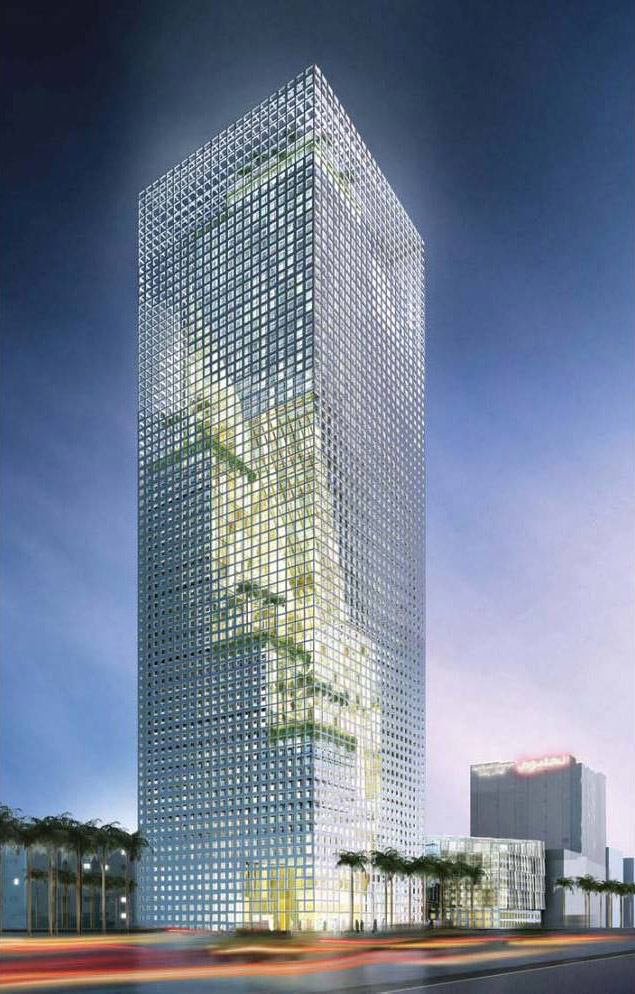|
|
Wissam Yassine and Karim Elgendy
During the 1990s and the early 2000s, the UAE, and the city of Dubai in particular, witnessed a rapid rate of growth in its built environment driven by a real estate bubble. In the span of a few years the city’s unprecedented rate of growth, which was driven by both demand and speculation, completely transformed the city. But such growth came at a price. Driven by their need for quick returns, developers cared little beyond delivering a building on time and on schedule. Speed of construction often came at the expense of quality, and issues of performance and energy use played almost no role in the design and construction processes. Common disregard of performance was also fueled by the fact that most buildings were commissioned for developers – rather than owner/occupier clients – since their focus lied solely on reducing initial capital expenditures without considering operating costs that are typically borne by tenants.
 Figure 1. Photo of the Masdar Institute Courtyard showing the wind tower, and the layered facades of residential units. Copyrights: Nigel Young/ Foster+Partners These commercial forces, coupled with relatively cheap electricity across the UAE, and a lack of demanding building regulations have paved the way to the development of unsustainable design practices over the last decade. A typical office building in the UAE today is a predominantly glazed high rise tower. Basic design decisions such as orientation, massing, and envelope design are usually made without much regard to their impacts on the buildings’ energy performance, and passive cooling strategies are rarely considered.
Continue reading Passive Cooling: Responding to Electricity Demand in the UAE
 Image 1. A night view of the design showing the shading envelope and the spiraling forms behind. Copyrights: Perkins+Will In February 2010, the design for Al-Birr Foundation Headquarters in Riyadh, Saudi Arabia, has been named as the winner of the 2010 Architectural Review / MIPIM Future Projects Awards under the ‘tall buildings’ category (Image 1). The unbuilt project, designed by Perkins+Will’s New York Office, was commissioned for Al-Birr Foundation, a non-profit organization aimed at alleviating poverty and caring for disadvantaged families and children.
The Design
Of the many features of the design of the 59, 000 sqm tower, perhaps the most interesting is how it was concieved as a sustainable urban tower that responds to the environmental characteristics and the microclimate of the city of Riyadh, which is a challenging climate to address given the extreme solar exposure and the heat conditions of Riyadh.
Faced with these climatic conditions and a deep plot of 1000 x 1200m, the projects’s designers response was to rethink the high rise typology in this context. The design’s most visible response to the climate is the building’s envelope which was designed as a large rectangular frame of brise-soleil enclosing the occupied parts of the building. This shading frame was designed to respond to both the different amounts of solar radiation received by each elevation as well as the interior spaces behind it. To achieve this result, a mapped shading mesh was devised to provide varying levels of openness for different locations of the different elevations depending on its solar exposure and its spatial/contextual influences. The result was an envelope that resembles a mesh of varying densities surrounding the building and simultaneously protecting and revealing the activities behind it.
This proposed design solution thus helps the building reduce its solar heat gain while maintaining its views towards the city (FIgure 1). In addition to this shading effect, the mesh-like dynamic treatment of the envelope has also helped animate the building’s expression with the dense and sparse zones of the facade adding a dynamic effect to what otherwise may have become a static pure form.
Continue reading Riyadh Tower Design adapts a Traditional Middle Eastern Shading Strategy
Karim Elgendy
Energy use in buildings accounts globally for nearly 40% of global energy consumption and 36% of total energy-related carbon dioxide emissions. These percentages are almost equally split in two halves between the industrialized countries and the rest of the world (Price et al., 2005).
Our buildings use energy in two ways; first, to keep our interior environment comfortable through cooling, ventilation, and heating our spaces; second, to power the appliances that we have come to depend on such as home appliances, lighting systems,computers, and other office equipments. To reduce this high percentage of energy use and the resultant carbon dioxide emissions, both sources of energy use in buildings must be addressed. The first energy use can be addressed by improving the building envelope’s efficiency in order to reduce the need to condition its spaces (cooling, heating, and ventilating). This method of conserving energy use includes a vast array of passive low energy design strategies that depend on the building’s environment and context. The second energy use can be addressed by improving the efficiency of appliances and equipment used inside buildings including improving the efficiency of lighting and dissemination of improved stoves for cooking in rural areas. Continue reading The State of Energy Efficiency Policies in Middle East Buildings
|
|


